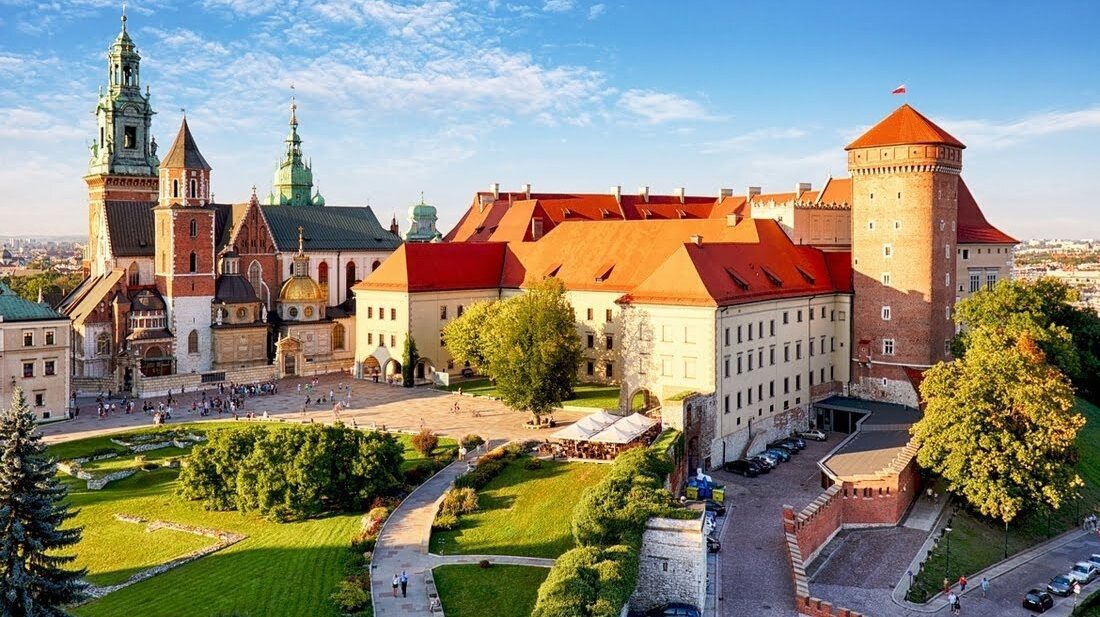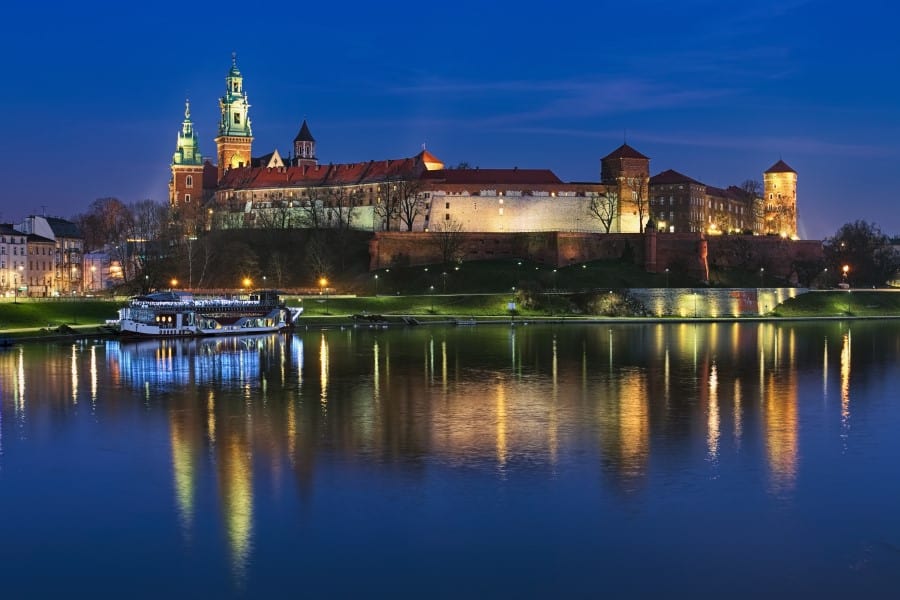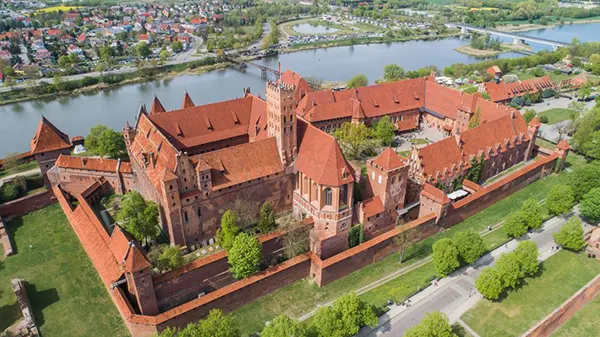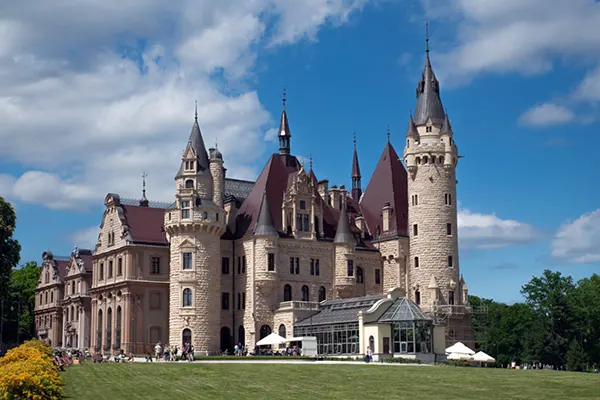
Wawel Castle
Wawel Castle, aka “Wawel” in Polish, is one of Krakow’s most famous landmarks. In a way, it is even called a symbol of the city and the whole country. The castle features a museum with some of the most valuable cultural artefacts.
A bit of history
There used to be a settlement on the site of the castle, which (according to archaeological data) occupied this territory in the IX century. It was a tribe of Vislians, who were engaged in farming.
About 200 years later, fortifications made of stone were built. Active transformation of the territory took place in the period from 1290 to 1300, when Duke Wenceslas II was in power. The next changes were made to the buildings in the 14th century. The reigning Polish king Casimir III the Great at that time demanded that the castle be rebuilt in the Gothic style.
The year 1499 was marked by a major fire. Aleksander Jagiellon started to reconstruct the building, but it was not finished, because in 1595 the Wawel Castle started burning again. The consequences were devastating: a part of the castle was completely destroyed. The castle continued to function, including the coronation of monarchs and the burial of prominent figures. However, it was no longer an object of attraction.
Wawel suffered a lot in the following years. At first it was looted. In 1702 it was burned down by the Swedes (the Great Northern War). In the period from 1724 to 1728 there was an attempt of restoration works, but because of the loss of independence of Poland the process was stopped. It forms the barracks of the Austrian garrison.
The Wawel was regained to Poland in 1905, when the government settled the ransom. Immediately afterwards, the construction of new parts and the reconstruction of the surviving ones started. Since 1994 the castle has been a listed historic monument.

Features of Wawel Castle
The Wawel Castle consists of a complete set of objects. There are fortifications, a cathedral and the Royal Castle itself. There are three gates that surround the castle grounds:
- The Bernardine Gate – next to the Sandomierz Tower.
- The Vázov Gate – located in an area surrounded by the cathedral and the house.
- Armorial – near the monument to Tadeusz Kościuszko.
The royal chambers are situated near the chapels. Sigismund’s Chapel is a must-see. It is famous for its big bell. It competes with the Chapel of the Waza Kings. The style of the chapel is Florentine.
As for the towers, there are 3 of them. They are part of the structures designed to defend the castle. The complex is called the “Towers of Fire” and dates back to the 15th century. The towers themselves have names:
- Senator’s or Lubranka;
- Sandomierz;
- The Robber’s Tower or the Villain’s Tower.
Another main attraction of the area is the Cathedral of St. Wenceslas and St. Stanislaus. It houses the royal tomb and the altar of the Fatherland. The latter was used as a place where the monks stored the spoils of war. The cathedral’s entrance is decorated with mammoth bones. They are believed to bring good fortune to the settlement.
Popular articles
-
 Malbork Castle – The Largest Brick Fortress in the World
Malbork Castle – The Largest Brick Fortress in the WorldMalbork Castle stands as one of the most significant medieval …
-
 Moszna Castle: A Fairytale Landmark of Lower Silesia
Moszna Castle: A Fairytale Landmark of Lower SilesiaMoszna Castle stands as one of the most recognisable historical …
-
 Roztocze — the Green Pearl of Eastern Poland
Roztocze — the Green Pearl of Eastern PolandRoztocze, a scenic region stretching across the Lublin Voivodeship in …
